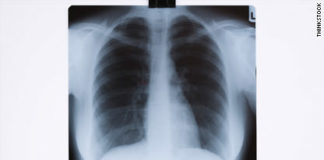Osteoporosis Drugs May Boost Cancer Risk
People who take bisphosphonates, or bone-strengthening drugs for osteoporosis, may have a slightly higher risk of developing esophageal cancer, especially if they take them for several years, a study out this week in the British Journal of Medicine finds.
Quantity Vs. Quality: Long-Term Use Of Bone-Building Osteoporosis Drugs
Bisphosphonate treatments, proven to enhance bone density and reduce fracture incidence in post-menopausal women, may adversely affect bone quality and increase risk of atypical fractures of the femur when used for four or more years, according to preliminary research presented at the 2010 Annual Meeting of the American Academy of Orthopaedic Surgeons (AAOS).
Common Osteoporosis Drugs Are Associated With A Decrease In Risk Of...
Women who take some types of bone-building drugs used to prevent and treat osteoporosis may be at lower risk of breast cancer, according to a study by U.S. researchers published in the British Journal of Cancer.
Some Bisphosphonates Users Unfamiliar With Drug’s Possible Side Effects On Oral...
People undergoing bisphosphonate therapy to prevent or treat osteoporosis (a thinning of the bones) may be unfamiliar with the drug and possible adverse side effects on oral health, according to a study in the May issue of the Journal of the American Dental Association (JADA).
Long Term Use Of Oral Bisphosphonates May Double Risk Of Esophageal...
People who take oral bisphosphonates for bone disease over five years may be doubling their risk of developing oesophageal cancer (cancer of the gullet), according to a new study published online in the British Medical Journal.
Drugs Used To Treat Osteoporosis Not Linked With Higher Risk Of...
Although some reports have suggested a link between the use of oral bisphosphonates (drugs that prevent the loss of bone mass) and esophageal cancer, analysis of medical data from more than 80,000 patients in the United Kingdom found that use of these drugs was not significantly associated with new cases of esophageal or gastric cancer, according to a study in the August 11 issue of JAMA.
Benefits Of Osteoporosis Treatments Outweigh Possible Risk Of Rare Femoral Fractures,...
The occurrence of an unusual type of fracture of the femur, or the thigh bone, is very low in patients with osteoporosis, including those treated with the drug family known as bisphosphonates, according to a new study led by a team of UCSF epidemiologists.
Report Predicts Huge Increase In Osteoporotic Fractures Due To Aging Populations
Preliminary findings from an upcoming new report by the International Osteoporosis Foundation (IOF) show alarming projections and reveal the poor state of post-fracture care in the Russian Federation and many other countries in the region. The findings were announced at a press conference in St. Petersburg at the IOF Summit of Eastern European and Central Asian Osteoporosis Patient Societies.
Exercise Associated With Lower Rate Of Fractures In Elderly Women
Home-based exercises followed by voluntary home training seem to be associated with long-term effects on balance and gait (manner of walking), and may help protect high-risk, elderly women from hip fractures, according to a report in the September 27 issue of Archives of Internal Medicine, one of the JAMA/Archives journals.
Risk Of Falling Is Overlooked As The Major Cause Of Fractures...
An elderly person's risk of falling is too often overlooked when trying to prevent them from getting serious fractures, for instance of the hip or wrist, according to an article published in the British Medical Journal.
Wrist Fractures Have An Important Public Health Impact
Wrist fractures have an important personal and public health impact and may play a role in the development of disability in older people, according to a new study published online in the British Medical Journal.
Ultrasound Device Improves Poor Bone Healing
Ultrasound can speed the healing of fractures. A randomized controlled trial reported in the open access journal BMC Musculoskeletal Disorders has found that the use of low-intensity pulsed ultrasound (LIPUS) in patients with tibial fractures which showed inadequate progress toward healing resulted in 34% greater bone mineral density (BMD) in the fracture area after 16 weeks than use of a sham device.













